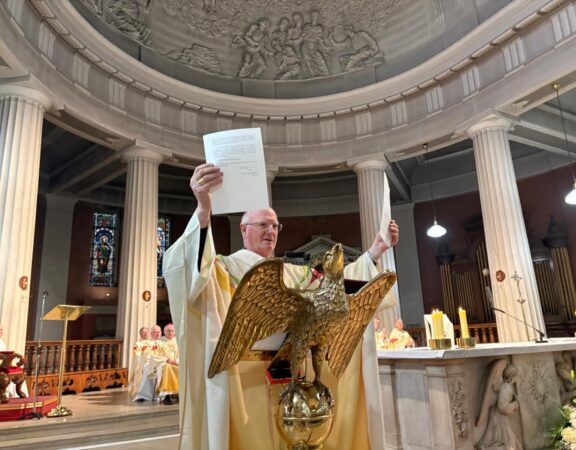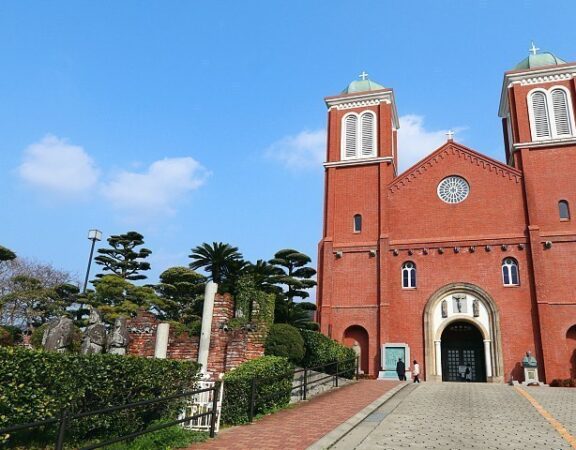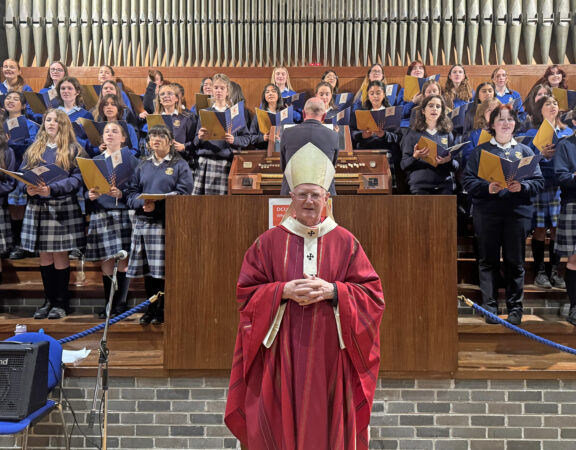150th Anniversary of Saints Mary and Patrick Church, Avoca
Speaking Notes of
Most Rev. Diarmuid Martin
Archbishop of Dublin
——————-
Avoca, Co. Wicklow, 7th July 2012
“We come together to celebrate the history of this Church and we come to celebrate the history and the energy of a community. This Church is in a remarkable way a witness to what community can achieve and at the same time it is a remarkable example of how within and around a Church building, community is constructed and spread. Our Mass this evening is part of a year-long series of events to mark the one hundred and fiftieth anniversary of the dedication of the Church of Saints Mary and Patrick here in Avoca. A year-long celebration does not come without effort and sacrifice. I wish in the first place to congratulate the members of the 150th anniversary committee for their effort and for the contribution they are bringing to ensure that the spirit of community, which contributed in 1862 to the building of this Church, is translated into a spirit of community in and for our times. Our times are very different to those of 1862 but today we need to actively take in hand the challenge of community-building, which is more necessary than at many other times in our history. I am delighted that President Higgins has honoured us with his presence here this evening. In his short time in office, President Higgins has, through his words and his gestures, shown how he values the importance of communities and the values that underlie community. He has on many occasions reminded us about the values that underlie and build community in our times. He has spoken about what it is to be a citizen in our days. Being a citizen is not just about voting or organizing. It is about going beyond the day-to-day of self-interest and of economics and politics, no matter how important they are. There is a spirituality of community. It is based on a different manner of understanding who I am, as an individual and a citizen. It is about moving towards a realisation that the way forward for society is that of reaching out, of service and of working together with a real sense of purpose and hope. The people who came together in 1862 to build this Church lived in difficult times, but the Church they built is a Church from which the word “hope” emerges in capital letters. They built a Church which was to last and they built a Church which expressed beauty in terms of their world, which was to last and maintain a sense of beauty of which we are all proud today. 1862 was a remarkable time for the life of Irish society and of the Irish Church. The famine was just fifteen years over. But it is hard for us to imagine the sense of trauma and precariousness and indeed of on-going grief and collective mourning that must have remained within communities at that time. There was at that time a sense of renewal in the Church in Ireland. In pre-famine and in pre-Catholic Emancipation times, the level of religious practice in Ireland was very low. With emancipation and with the reform of the Council of Thurles a new renewal began and new Churches were built. There was a reform in Church discipline, not just in terms of norms and laws, but in a new spirit of trying to recall the fundamental mission of the Church and the need for deeper religious education. The renewal in the Church at that time was certainly the fruit of the efforts of the leaders of the Church in Ireland and especially of Cardinal Cullen who came here personally in 1862 to dedicate this Church. But the real leaven of renewal of the Church at that time was in the renewal of local Church communities, led by dynamic priests, but supported actively by communities with a sense of purpose. I greet the priests of the parish of today, Father Eamonn Crossan, assisted by Father Tommy Coughlan and Father Sean O’Toole, who minister here in Avoca as well as in Templerainey and Barranisky. I greet the priests who ministered here in the past and those from the neighbouring parishes who work together in a broader pastoral area. I greet the members of the Parish Pastoral Council, the teachers and the many lay men and women who work so actively to strengthen the Church community. I was happy to notice on the anniversary website the reference also to the building at the same time of the Church of Ireland Church. In the early nineteenth century, there was an important sense of new evangelism in the Protestant Churches in Ireland which is often overlooked. Avoca had and has a real sense of community-ecumenism in which communities of different faiths work together and respect each other. When I look back at the history of this area, I am fascinated to see that this part of Wicklow probably has one of the richest collections of quality Church building in any one area within Ireland. The Churches that were built were each in their own way exceptional. The Gothic style of the Churches brought a unique mix of beauty and yet austerity. There is nothing of the florid style of continental Churches. These Churches represent rather in unique ways the hardship and ruggedness of life and they represent a spirit which recognised that it was possible within that harshness for communities to build something of lasting value. The community built this Church. The rocks are local rocks and represent something of what hard-work and genius can produce from within a community. The local miners made their contribution, together with the local farmers and the wealthier land owners. Life was not easy in 1862. When an industry like mining ceased in the last century, it inevitably brought a shock to the local economy. It is important however to remember that while mining may have brought a certain prosperity, work in the mines was among the hardest, riskiest and toughest occupations. But strangely mining also brought a unique sense of community. Working down in the darkness of the mines, the elements of risk and the closeness of the workers forged a sense of having to work together and be attentive to others, which was then translated into the daylight of the life of the town. Alongside the Churches that were built in this part of Wicklow and Southeast Ireland in the mid-19th century there was another boom in building: Garrisons. Military roads and garrisons were built right across the county from Glencree and into small towns which had no military tradition. This was the fruit of the sense of insecurity that was felt by Government after the 1798 rising. The garrisons have long since closed to their initial purpose, but the Churches are still there and Sunday after Sunday the congregations gather in them, generation after generation. This contrast teaches us something about the concept of security. There are times when security requires the enforcement of law and order. But real security is what is often called today “human security”. It comes from economic investment in livelihoods but also from that concept of people being enabled to take on their own responsibility for their own future. The security of our country today requires all the economic measures which are necessary but above all it requires in investment and mobilisation of the talents that are present in our people and in our communities. Real future will be only be built on such a sense responsibility for common needs and cares. We have all seen how greed and a dominant self-interest may bring short term gain for some, but it is not long before greed and dominant self-interest damage the fundamental roots of our living together. The Church today is facing challenging times. It is hard to compare the different challenges of different historical times. In 1862 this community was marked by poverty and insecurity, yet the people of this community found a way of giving concrete expression of how they maintained hope through the building of this Church. And this Church has not failed them in the hundred and fifty years that have since passed. In the midst of the hardship of a mining and poor agricultural community this Church building was a focal-point of a deep hope that is present in human beings and the fact that it is only through forward-looking thinking and purpose that the road opens us to a different future. That foreword-looking thinking will only be effective if there is a genuine and cooperative spirit of working together. The theme of our recent Eucharistic Congress was Communion with Christ and Communion with one another. As a Church community today, we as the members of the Christian community, who are nourished Sunday after Sunday here through the Word of God and the Eucharist, must ever seek new ways of being a true leaven of communion with one another, within our Catholic Community, within the family of other Christians and with the broad community of all the citizens of this area. Homily from Archbishop Martin at Mass to celebrate the 150th Anniversary of the Church of Saints Mary and Patrick, Avoca (Saturday July 7th The Church in our times is called to develop its sense of mission and renewal. This community and this country of ours need the contribution of committed Christians who witness to the teaching of Jesus Christ through the way they live and witness. Renewal requires in the first place a deepening of our faith and of the significance for all times of the person and the teaching of Jesus Christ, who showed us what it means to love and to spread goodness and honesty and care. Jesus showed that by giving himself until the end. The first reading and the Gospel we have just heard reminds us that message of the prophets and of Jesus himself was very often rejected, even by those who were closest to them. Jesus was rejected in his own home town, by people who felt that since he was from there they and they alone knew who he really was and how he should act. The message of Jesus is one which takes us out of and above the smallness that is often present in our midst at any time in history. The message of Jesus Christ is one which challenges especially those who profess to be close to him, those who are members his Church. If we remain within our own narrow ways of thinking we will remain just where we started. If we allow the message of Jesus to take deep root in our lives then even in a society which no longer understands or is indifferent to his teaching, we can awaken others to the fact that “there is a prophet among us”, as the first reading says. This Church in Avoca is not the fruit of people who one-hundred-and-fifty years ago gave-in to resignation and frustration; it is rather the fruit of enlightened and courageous and hope-filled people from every part of this community who set alight a spark of hope and purpose which is still aflame in us today. As we celebrate this anniversary, we express our gratitude to them for their vision. We can show that gratitude to them and to others throughout the history of this parish who gave leadership and gave of themselves, by following in their example and building together for ourselves and for the next generations an Avoca with a sense of courage and pride and purpose as we try to live the Christian life in our times. “







